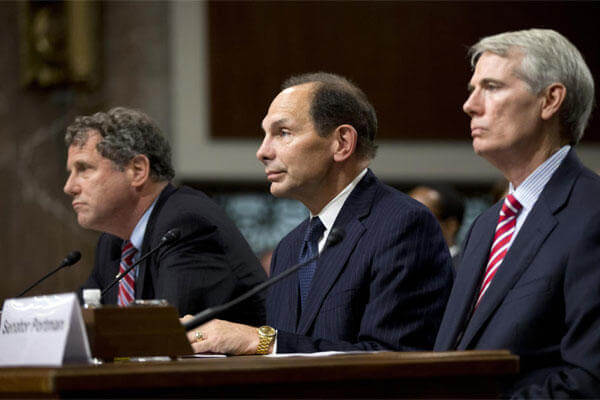Veterans Affairs Secretary Bob McDonald told lawmakers on Wednesday that the department is on track to meet two lofty goals set by his predecessor: End the disability claims backlog and veteran homelessness.
But McDonald, in testimony before the veterans' affairs panel of the House Appropriations Committee, offered a laundry list of figures and some projections indicating that whatever victories the VA may achieve in the next year or so, the pieces already are set for the making of another one.
"The cost of fulfilling our obligations to veterans grows over time because veterans demand for service and benefits continues to grow as wars end," he said. "While it's true that the total number of veterans is declining, the number of those seeking care and benefits is increasing dramatically."
The last 14 years of war have seen increasing numbers of today's veterans applying for VA care, which is already striving to meet the care demands of the larger and aging Vietnam veteran population, McDonald said. In 2014, for example, 22 percent of Vietnam veterans received service-connected disability benefits, but that figure is expected to increase.
From 1960 until 2000, he said, about 8.8 percent of America's veterans were seeking VA care. In the last 14 years – since the invasions of Afghanistan and Iraq – the percentage has more than doubled, to 19 percent. In that time not only has the number of claims grown, but the number of medical issues detailed in each claim. In 2009, he said, the VA processed 989,000 claims that included some 2.7 million medical issues.
McDonald projects that in 2017, the VA will process 1.4 million claims detailing nearly 6 million medical problems.
Disability ratings and their associated costs also continue to climb. From 1950 to 1995, the average claim garnered a 30-percent rating. Since 2000, that has increased to 48 percent.
Meanwhile, there is a greater survival rate for wounded troops, as well as more sophisticated methods for treating health conditions.
"Veterans demands for benefits and services have exceeded VA's ability to meet them," he said. "You have to understand why that is happening."
McDonald testified before the subcommittee on the VA's $169 billion budget request for next year.
He said the claims backlog that has dogged the department since 2010 is on target to be eliminated by the end of 2015, and the department's $85 million request for 770 new employees is tied to hitting that goal and also taking on the separate problem of appeals.
"We've done all we can with digitization and mandatory overtime," he said, referring to the agency's work converting hundreds of thousands of paper claims into electronic records. "Now we need more people."
McDonald also told the panel that VA is also on target to end chronic veterans' homelessness by the end of 2015 – a goal first voiced by his predecessor, Eric Shinseki, in 2010. Since then homeless has dropped among veterans by about 33 percent as the VA has worked with the Department of Housing and Urban Development as well as states and cities to get veterans and their families into housing.
But McDonald told lawmakers the VA is also advocating for more veterans courts across the U.S. These courts work in conjunction with VA officials, law enforcement and treatment facilities to try to keep veteran offenders out of jail by getting them counseling and treatment.
"Incarceration for a veteran is a ticket to homelessness," he said. "Veterans courts are a great way to deal with this ... because if we can keep veterans out of jail we can keep them from becoming homeless."
-- Bryant Jordan can be reached at bryant.jordan@military.com























